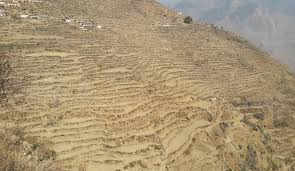The Impact of Climate Change on Nepal
Climate change is a serious threat to Nepal, a country that is already vulnerable to natural disasters. The impacts of climate change are already being felt in Nepal, in the form of more extreme weather events, such as floods, landslides, and droughts. These events have caused widespread damage and loss of life.
In the future, climate change is expected to have even more severe impacts on Nepal. The country is likely to experience more frequent and intense extreme weather events, as well as rising sea levels. This could lead to widespread displacement, food insecurity, and water scarcity.
The government of Nepal is taking steps to address the challenges posed by climate change. However, more needs to be done to mitigate the impacts of climate change and to adapt to the changes that are already happening.
Nepal is a country that is already vulnerable to natural disasters. The Himalayas, which form the backbone of the country, are home to some of the most fragile ecosystems on Earth. These ecosystems are sensitive to changes in temperature and precipitation, and they are already showing signs of stress due to climate change.
The impacts of climate change on Nepal are already being felt. In recent years, the country has experienced more frequent and intense extreme weather events, such as floods, landslides, and droughts. These events have caused widespread damage and loss of life.
For example, in 2015, a devastating earthquake struck Nepal, killing over 9,000 people and displacing millions more. The earthquake was caused by a combination of factors, including climate change. The increased melting of glaciers in the Himalayas has led to more unstable slopes, which are more prone to landslides.
In the future, climate change is expected to have even more severe impacts on Nepal. The country is likely to experience more frequent and intense extreme weather events, as well as rising sea levels. This could lead to widespread displacement, food insecurity, and water scarcity.
For example, rising sea levels could inundate coastal areas, displacing millions of people. This could lead to conflict over land and resources, as well as increased poverty.
Climate change is also a threat to Nepal's agriculture sector. The country is already facing food insecurity, and climate change is only going to make this worse. The changing climate is making it harder for farmers to grow crops, and it is also leading to pests and diseases that are destroying crops.
The government of Nepal is taking steps to address the challenges posed by climate change. The country has developed a climate change policy, and it is also working to reduce greenhouse gas emissions. However, more needs to be done to mitigate the impacts of climate change and to adapt to the changes that are already happening.
There are a number of things that can be done to help Nepal adapt to climate change. These include:
- Investing in early warning systems to help people prepare for extreme weather events
- Building infrastructure that is more resilient to climate change
- Developing drought-resistant crops
- Promoting sustainable agricultural practices
Individuals can also help by reducing their own carbon footprint. This can be done by making changes to their lifestyle, such as driving less, using less energy, and eating less meat.
Climate change is a serious threat to Nepal, but it is not insurmountable. With the right investments and policies, Nepal can adapt to climate change and build a more sustainable future.
In addition to the impacts mentioned above, climate change is also having a number of other negative impacts on Nepal. These include:
- Increased air pollution
- Increased waterborne diseases
- Loss of biodiversity
- Decline in tourism
The impacts of climate change are already being felt in Nepal, and they are only going to get worse in the future. The government of Nepal needs to take urgent action to mitigate the impacts of climate change and to adapt to the changes that are already happening. Individuals can also help by reducing their own carbon footprint and by supporting organizations that are working to address climate change.
Conclusion
Climate change is a serious threat to Nepal, but it is not insurmountable. With the right investments and policies, Nepal can adapt to climate change and build a more sustainable future. Individuals can also help by reducing their own carbon footprint and by supporting organizations that are working to address climate change.










